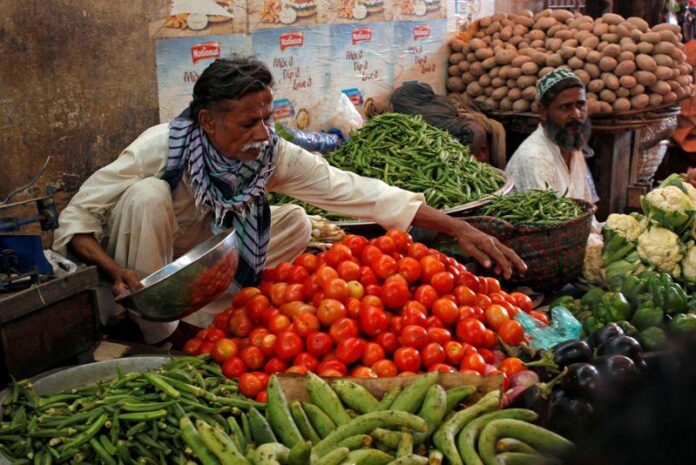ISLAMABAD: Annual consumer inflation edged down to 8.5pc in April from 10.24pc in March, which is the third consecutive decline since January 2020, data released by the Pakistan Bureau of Statistics (PBS) revealed on Friday.
The Consumer Price Inflation (CPI) index was recorded at 14.56pc in January, the highest jump in over a decade, severely squeezing household budgets. However, the index started falling from February, when it had eased to 12.4pc.
The CPI index showed a 6pc decline during the past three months mainly due to economic slowdown amidst Covid-19, dwindling oil prices and unchanged energy tariffs in the last few months.
Experts believe inflation may drop further in May following the major cut in oil prices in the country.
They said since the demand in the economy is likely to be subdued, the central bank may be provided further room to cut in interest rate.
The central bank kept interest rates unchanged at 13.25pc in January but once the coronavirus began battering business and household finances, it slashed rates three times in recent weeks to 9pc. International financial institutions, the SBP and the Ministry of Finance have projected up to 1.6pc negative economic growth for the current fiscal year.
The PBS calculates the inflation index by monitoring prices of 356 commodities in 35 cities and 244 goods in 27 rural markets.
Urban CPI inflation decreased by 1.6pc in April as compared to March 2020. The Urban CPI index was recorded 7.7pc YoY in April 2020, as compared to 9.3pc in March 2020 and 8.4pc in April 2019.
This decrease in inflation was mainly attributed to a fall in the prices of onions (-22.94pc), chicken (-21.81pc), tomatoes (-11.1pc), fresh milk (-4.29pc), vegetables (-3.86pc), wheat (-3.29pc) and vegetable ghee (-1.01pc).
On the other hand, Rural CPI inflation decreased 1.9pc, from 11.7pc in March to 9.8pc in April.
The core inflation, which is calculated by excluding food and energy items, went down in urban as well as in rural areas. Core inflation in urban areas decreased from 7.4pc to 6.4pc while in rural areas, it declined from 9.4pc to 8.5pc.
The prices of food and non-alcoholic beverages group, which have 34.6pc weight in the CPI basket, surged 11.7pc in April over a year ago. The perishable food items prices increased 11.16pc in one month.
Similarly, the housing, water, electricity, gas and fuels group – having one-fourth weight in CPI basket, increased only 5.13pc last month. Transport fares, having 5.9pc weight in CPI basket, increased 3.44pc on an average in April over a year ago.
Average inflation in the first 10 months (July-April) pf FY20 stood at 11.22pc, as compared to 6.51pc recorded during the same period last year.




